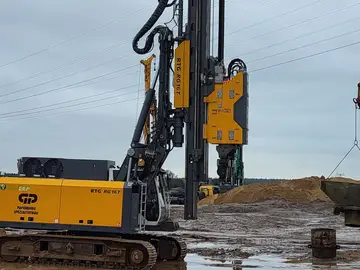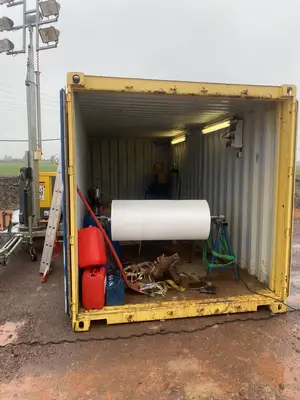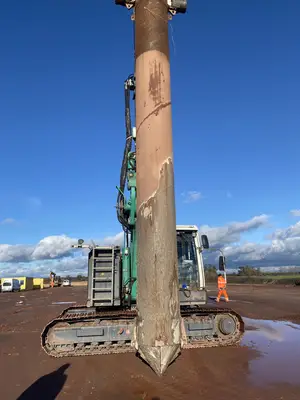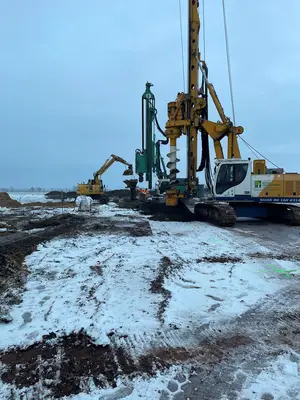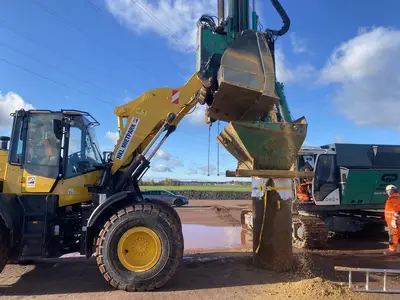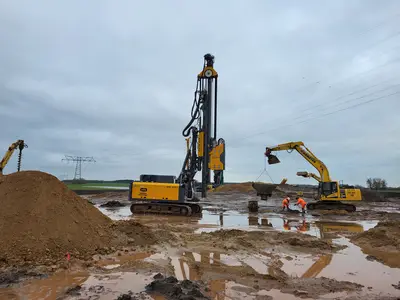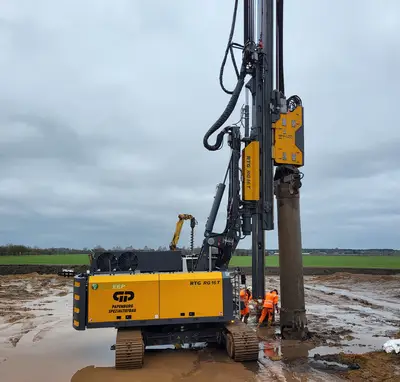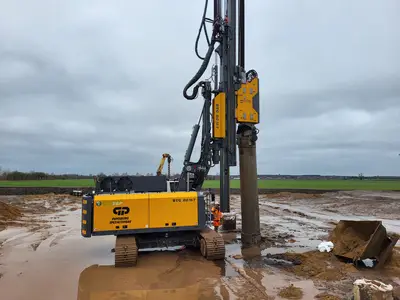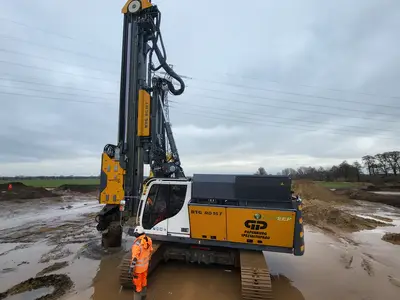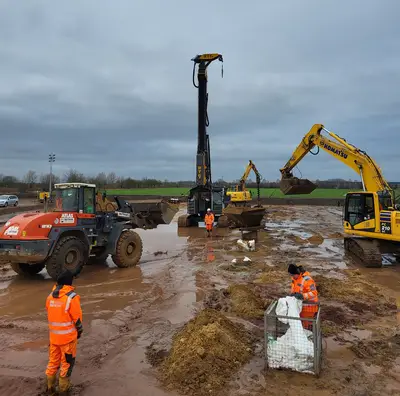Two RTG RG 16 T in use for the German A14 north extension
In November 2011, the go-ahead was given for the northern extension of the German A14 highway. In a truly mammoth project, the long-distance traffic gap between the Magdeburg and Schwerin freeway junctions via Wittenberge is to be closed by a total of 155 kilometers of freeway.
Ten junctions, several parking lots and a large rest area are also planned along the route. Four sections are currently under construction, including two around the Stendal bypass.
The future highway runs over a former lake in which shellfish have settled over time and formed a limestone muck. This is covered with a thin layer of sand. GP Spezialtiefbau GmbH is currently facing the challenge of strengthening this poorly load-bearing subsoil for the superstructure with an eight-meter-high embankment. For this purpose, a total of 3,700 geotextile-coated sand columns (so-called GEC) with a diameter of 80 cm are being installed using two RTG RG 16 T. Around 2,000 of the columns have already been completed.
GP Spezialtiefbau GmbH masters this challenge in a creative way: First, the columns are pre-drilled to the full installation length of the later sand columns using a Bauer BG 18 H continuous flight auger with a diameter of 770 mm. Then correspondingly long 800 mm steel pipes are vibrated in, which were built in-house and fitted with flaps at the bottom – similar to the vibro method. These are fitted with a special geotextile bag, which prevents the sand from flowing into the pulpy lime depression and then filled with a specially defined sand. When the sand is pulled out, it is compacted by further vibration. The weight of the bag opens the flaps again. The bags filled with sand remain in the ground – the fully displacing geotextile-coated sand column is created.
The two RG 16 T are equipped with different vibrators: An MR 145 V vibrator is used for the deeper columns and an MR 95 AVM vibrator for the shorter columns. A pipe traverse for double clamps is attached to both, which fix the pipes from both sides and vibrate them in and out safely and stable.
The sandbags are assembled directly on site and sealed using cable ties or a sewing machine. The pipes or the bags in the pipes are filled with sand using a wheel loader and a hopper. Here, mechanical engineering ingenuity and special civil engineering know-how go hand in hand.
We wish GP Spezialtiefbau GmbH continued success on their construction site and would like to thank terra infrastructure,the service and sales partner of RTG Rammtechnik GmbH.
